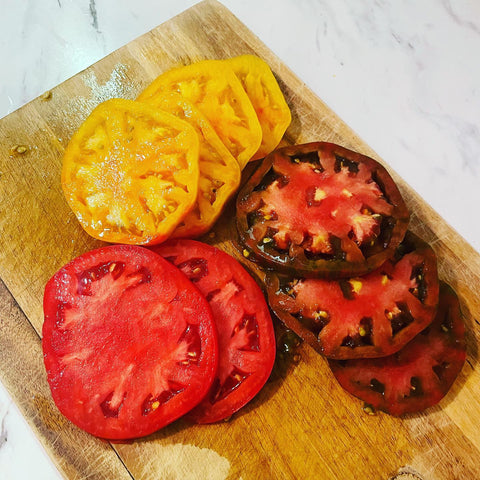Gardening is a journey that transcends generations, connecting us with the wisdom and traditions of the past. Heritage and heirloom plants are a window into history, preserving the beauty and flavors of bygone eras. When cultivated in modern raised garden beds, these plants not only offer a tangible link to our heritage but also contribute to sustainable and eco-friendly gardening practices. In this enlightening exploration, we'll delve into the significance of heritage and heirloom plants, how to integrate them into your innovative raised garden beds, and the rich rewards they bring to your gardening journey.
Understanding Heritage and Heirloom Plants
Heritage Plants: Heritage plants, often referred to as historic or antique plants, have been grown and passed down for generations. They possess cultural, historical, or traditional significance. These plants are cherished for their ability to transport us to different eras and regions, reminding us of the human connection to the land.
Heirloom Plants: Heirloom plants are a subset of heritage plants. They are open-pollinated varieties that have been carefully cultivated, saved, and handed down from one generation to the next. Heirlooms retain their unique traits and characteristics through natural pollination, distinguishing them from modern hybrid plants.

Integrating Heirloom Plants in Raised Garden Beds
- Choose Authentic Heirloom Varieties:
When selecting heirloom plants for your raised garden beds, opt for varieties that have a documented history of being passed down through generations. Research reliable sources that provide accurate information about the origin and traits of these plants.
- Plan Your Garden Layout:
Consider the growth habits, light requirements, and spacing needs of your chosen heirloom plants. Design your raised garden bed layout to accommodate these factors, ensuring that each plant has the space and conditions it needs to thrive.
- Prepare the Soil:
Create a nutrient-rich soil mix in your raised beds that caters to the preferences of the heirloom plants you're cultivating. Incorporate compost and organic matter to enhance soil fertility and structure.
- Plant with Intention:
Pay homage to the past by planting your heirloom seeds or seedlings with intention and care. Follow recommended planting depths and spacing guidelines to give each plant the best start.
- Label and Document:
Keep a record of the heirloom varieties you're growing in your raised beds. Use labels or markers to identify each plant and its unique history. Documenting your gardening journey adds a personal touch and creates a legacy for future generations.
- Companion Planting with Tradition:
Embrace companion planting techniques that align with the historical context of your heirloom plants. Many traditional cultures practiced companion planting for pest control, nutrient enhancement, and mutual benefits among plants.
- Hand Pollination for Seed Saving:
To preserve the authenticity of heirloom plants, consider hand-pollinating certain species. This practice helps prevent cross-pollination with other varieties and ensures the purity of seeds for future generations.
- Protect and Nourish:
Treat your heirloom plants with the care and respect they deserve. Monitor for pests and diseases, and employ natural methods for protection. Water and fertilize according to the specific needs of each plant.
- Harvest and Share:
As your heirloom plants flourish, enjoy the rewards of your labor by harvesting the fruits, vegetables, or flowers they produce. Share the bounty with family, friends, and fellow gardeners, fostering a sense of community and connection.
- Document Your Journey:
Document your experience of cultivating heirloom plants in your raised beds. Keep a gardening journal or create digital records that capture the growth stages, challenges, and successes of each plant.

Benefits of Integrating Heirloom Plants in Raised Beds
- Biodiversity Preservation:
Cultivating heirloom plants contributes to the preservation of plant biodiversity. These unique varieties have often been displaced by modern hybrid counterparts. By growing heirlooms, you're helping to conserve a diverse range of plant genetics.
- Cultural Heritage:
Heirloom plants are carriers of cultural heritage, reflecting the agricultural practices, flavors, and traditions of different communities. Growing these plants in raised beds allows you to connect with your cultural roots and share this connection with others.
- Sustainability:
Heirloom plants are well-suited for sustainable gardening practices. They tend to be naturally adapted to local conditions and require less synthetic inputs. Integrating them into your eco-friendly raised garden beds aligns with the principles of organic and environmentally conscious gardening.
- Taste and Aesthetics:
Heirloom plants often boast unique flavors, colors, and shapes that are distinct from modern varieties. When harvested and enjoyed, they offer a sensory experience that transports you to the past.
- Educational Opportunities:
Cultivating heirloom plants in raised beds provides educational opportunities for children and garden enthusiasts alike. You can share stories about the history and significance of these plants, fostering a deeper appreciation for the natural world.
Conclusion
The practice of integrating heritage and heirloom plants into raised garden beds transcends gardening itself. It's a journey that bridges time, culture, and tradition, enabling you to reconnect with the roots of the past while nurturing a sustainable future. As you cultivate these unique and storied plants, your raised beds become vessels of history, a testament to the beauty of biodiversity, and a platform for passing down knowledge to generations yet to come. So, embark on this journey of connecting with the past through your garden, and watch as the legacy of heirloom plants thrives in the embrace of sustainable gardening practices.









